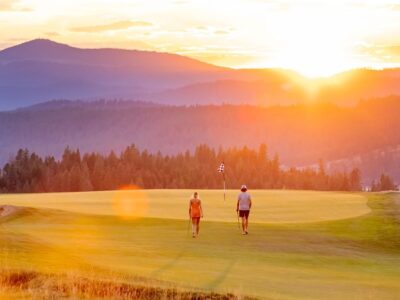At its peak, the Roman Empire was one of the largest land empires in the world. It controlled most of Western, Southern, and Central Europe, North Africa, Iberia, and the Middle East.
The academic study of Ancient Rome has brought several widely accepted theories about the Empire’s role in developing Western civilization. We often talk about the achievements of Rome and its impact on establishing law, class structure, philosophy, and military tactics, republics turned to imperial rule, engineering, and, remarkably, environmentalism.
Academics have traced ancient Roman environmentalism as early as the young Roman Republic. A Journal of Interdisciplinary History report at MIT claimed climate and environmental factors played a role in Rome’s expansion throughout the Italian peninsula between 400–29 B.C.E.
As Rome’s military traveled to Germanic regions, the soldiers encountered several environmental and ecological landscapes that Germanic tribes used for farming or trade. Rivers, valleys, and plains offered arable land and water routes to the Adriatic Sea. By 300 B.C.E., Rome was urbanizing rapidly and relied on grain supplies from Sicily, Sardinia, and North Africa to feed the 1 million inhabitants of the city.
Rome’s navy was the most sophisticated for the Iron Age, which led them to win the Punic Wars and the capture of North Africa after the sacking of Carthage. The sea was Rome’s ally, helping them conquer the Mediterranean. The Gaulic lands were fertile for agriculture, and the rivers and seas connected them to Britannica, Greece, Egypt, and Syria, bringing in new foods and knowledge from scholars of these lands.
It wasn’t all sunshine, pillaging some Germanic villages, drinking wine, and being merry. They had to deal with volcanic eruptions and fallout, acid rain, blizzards in some parts, and disease.
The MIT journal believes there were several periods of climate variability due to volcanic eruptions in Iceland and pressure system changes near the Azores around Caesar’s conquest of Gaul and the height of the Republic. This activity caused varying precipitation patterns, a lack of solar energy for farming and heat, and cooler weather. Human-made carbon emissions weren’t the main climate threat at the time.
The expansion into Gaul led to more technological development. New mines brought more metals of value that lined the pockets of Rome’s elite while improving military technology and infrastructure. It is believed this led to the creation of coin-based trade in the Republic.
The Roman Republic wouldn’t last, though. Anger among the plebeians, or commoners, spread throughout the Republic. Politicians were corrupt and made decisions of self-interest. Some, like Tiberius and Gaius Gracchus, called for reform to appease the masses. They wanted to redistribute conquered land to the poor and subsidized grain. The Roman Senate was to be purged of corrupt officials through judicial reform, which would’ve led to a more socially equitable Rome. The Gracchus brothers were killed for their populist reform ideas.
Photo Courtesy Cristina Gottari
The disintegration of the Senate and Republic ultimately led to the First Triumvirate of Julius Caesar, Pompey the Great, and Marcus Licinius Crassus. In the wake of the Gracchus brothers’ deaths, civil uprisings began as senators jockeyed for control of Rome. The civil conflict led to Julius Caesar’s popularity with the military and the people. After defeating Pompey in a civil war in 49 B.C.E., Caesar assumed power as dictator, leading to the establishment of the Roman Empire.
After Augustus Caesar became Emperor in 27 B.C.E., the empire flourished. The first century CE was particularly fruitful, with warm weather and plenty of rain cultivating more crops and holding off diseases that allowed the population to expand. The Pax Romana, the 200-year era of peace in Rome, saw the empire at its peak.
It’s almost fitting the climate changed around the third century when Rome was a fractured, collapsing mess. More volcanic eruptions affected the weather, so the climate got cooler. More rodents were forced out of mountains, bringing diseases like smallpox and even the first known incident of bubonic plague.
Rome would be split into West and East after Constantine the Great declared Constantinople the new capital of the Eastern Empire and converted the empire to Christianity in the third century C.E. The Western Empire would slowly disintegrate as the Visigoths, Vandals, and Huns from Gaul and Hungary sacked Rome. The Western Empire eventually fell in 476 C.E., while the Byzantines would survive another millennium.
The Romans understood the need for a clean city. Roman cities are impressive for their time. They had a stringent waste management system called puticulum. They separated organic waste from inorganics and even had a garbage collecting service. All waste was disposed of outside city walls to avoid rodent infestation.
The aqueducts are marvels of pre-modern engineering. The ancient architect Vitruvius advocated for terracotta piping instead of lead. He knew lead was hazardous to health, but much of the empire’s water system, utensils, and other essentials were made with lead.
A 2014 research article entitled “Lead in Ancient Rome’s City Waters” said that the Romans had 100 times more lead in their drinking water than we do today. Some speculate the water worsened the health of citizens and caused the mental health of politicians to spiral out of control, which contributed to the downfall of the Western Empire after Emperor Marcus Aurelius.
There are also the Roman roads, which are still in use today. These roads, made from stone and concrete, have lasted more than two millennia of Western Civilization, surviving major historical events, including but not limited to the fall of Rome, the Dark Ages, the crowning of Charlemagne, the Norman invasion of England, the Magna Carta, Marco Polo’s journey on the Silk Road, the Renaissance, the Protestant Reformation, the Thirty Years’ War, the French Revolution, Napoleon’s conquest of Europe, and two world wars. Some ancient roads were paved with modern asphalt, and some are still granite-slab paths.
Photo Courtesy Wikimedia
Studies have shown that Roman concrete is better than modern concrete. U.S. News and World Report published an article in 2013 highlighting Paulo Monteiro, professor of structural engineering mechanics and materials at the University of California, Berkeley, and his findings on ancient Roman sustainable construction.
Monteiro discovered that Roman concrete is mixed with volcanic ash and limestone. It is more eco-friendly than today’s concrete, which creates more than 4 billion tons of carbon annually. The Roman version is also stronger; the ancient buildings still stand today.
The Romans didn’t just possess this engrained knowledge of how to use their environment and climate for societal development and military campaigns. Greek philosophers’ lessons on environmental appreciation and understanding gave them these advantages. Plato, Aristotle, and Pliny the Elder wrote extensively about nature and the Greeks’ relationship with it.
In Pliny the Elder’s “Naturalis Historia,” he reaffirms the Roman appreciation for nature, inspired by the work of Aristotle and other Stoic philosophers. The 10-volume series covers everything from astronomy, geology, medicine, mythology, zoology, meteorology, and anthropology. The Roman elite read these works at naseum.
The Romans taught us lessons about creating durable, long-lasting engineering marvels and ancient advanced cities. However, the Roman Republic and later Empire didn’t pass the sustainable development test in the eyes of some researchers. Why? The politicking, the assassinations of politicians, the numerous military campaigns, and the disintegration of Roman imperial authority over four centuries showed that Rome wasn’t established on sustainable ideas and was too politically ambitious to keep a sustainably run empire.
The whims of the masses were often disregarded in the wake of economic and territorial advancement. The Gracchus brothers understood this, so they pushed for populist reforms. The lessons from Rome’s rise and fall are to keep citizens happy, create long-lasting infrastructure, and respect nature for its omnipotent power.





